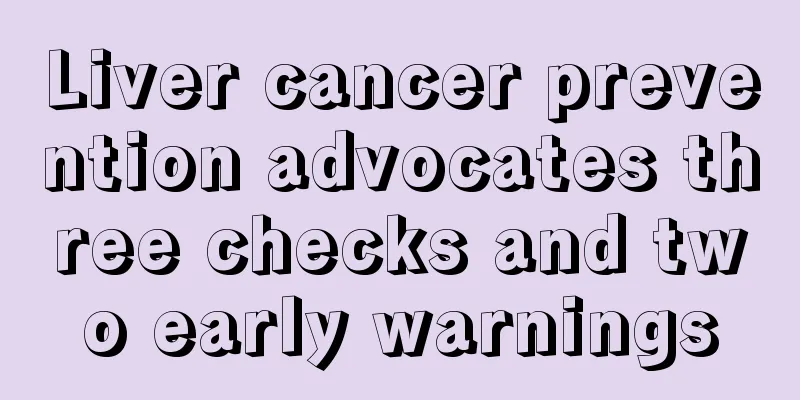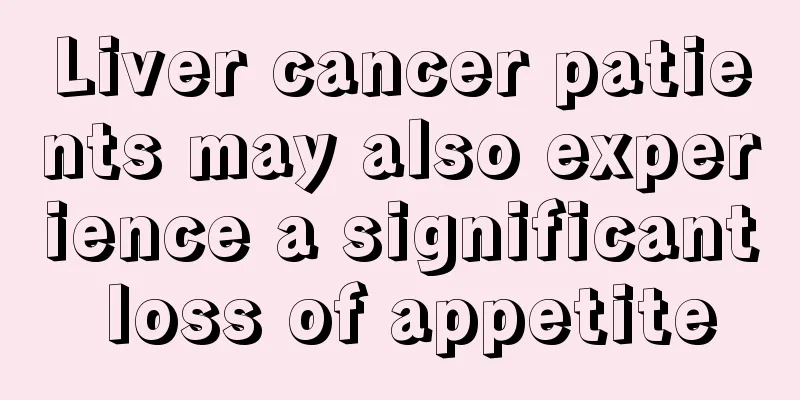Liver cancer prevention advocates three checks and two early warnings

|
Liver cancer is one of the common malignant tumors in my country with a high mortality rate. It ranks third in the death rate from malignant tumors, only after stomach and esophageal cancer. In rural areas of some regions, it ranks second, only after stomach cancer. About 110,000 people die from liver cancer in my country every year, accounting for 45% of the world's liver cancer deaths. By relying on serum alpha-fetoprotein (AFP) testing combined with ultrasound imaging to monitor high-risk groups, liver cancer can be diagnosed in the subclinical stage and the long-term effect of early resection is particularly significant. Combined with active comprehensive treatment, the five-year survival rate of liver cancer has been significantly improved. Therefore, for the prevention of liver cancer, we advocate three checks and two early detection. The three checks refer to the three-level general screening management. According to the risk level of liver cancer, the population prone to liver cancer is generally divided into three categories: The first category is high-risk groups, such as patients who develop cirrhosis due to chronic viral hepatitis (hepatitis B or hepatitis C). The second category is the moderate-risk group, such as patients with chronic viral hepatitis but no family history of cirrhosis and liver cancer. The third category is the low-risk group, such as patients with cirrhosis caused by non-viral reasons. The three-level census involves conducting different examinations based on three groups of people. Generally, high-risk groups should undergo relevant examinations (liver function, alpha-fetoprotein and ultrasound) every 3 months, moderate-risk groups should undergo examinations at least once every six months, and low-risk groups should undergo relevant examinations once a year. When suspicious cases are found, further CT, MRI or arterial angiography should be performed until liver cancer is ruled out. The two earlys refer to early prevention and early diagnosis. Clinical practice has shown that the treatment effects of small liver cancer with a diameter of less than 3 cm and mid- and late-stage liver cancer are completely different. Mid- to late-stage liver cancer is often accompanied by intra- and extra-hepatic metastasis, making it impossible to surgically remove the cancer, and interventional embolization and drug treatments are unlikely to be effective. However, for small liver cancer diagnosed in the early stages, surgical resection, embolization, ablation and other treatment methods are all effective. Early prevention is to avoid the spread of hepatitis, prevent damage to the liver caused by alcohol, drugs, etc., and prevent or alleviate the progression of liver fibrosis to the greatest extent. |
<<: How to prevent heat stroke in hot summer?
>>: Be careful to prevent "heat cold" in summer!
Recommend
What causes premature heartbeats?
Heartbeat is a necessary physiological phenomenon...
National ranking of hospitals for breast cancer treatment
Which hospital is good for treating breast cancer...
Causes of itchy skin due to gallbladder cancer
Cancer is very common in our lives. Once we suffe...
Is the recurrence rate high after hemisection of thyroid cancer?
There is a certain risk of recurrence after hemis...
Is it okay to rub hands to keep warm in winter?
As winter comes and the weather gets colder, peop...
What to do if the femoral head is broken
People's bodies seem strong but are actually ...
What issues should be paid attention to during confinement in summer
Nowadays, there is a phenomenon of confinement af...
How to make differential diagnosis of lung cancer? The diagnosis of lung cancer mainly depends on these three aspects
Lung cancer is a common lung disease. Now more an...
What are the treatments for skin cancer?
Skin cancer is a common disease. What patients wa...
The real effect of Angelica Aloe Capsules turns out to be like this
Angelica Aloe Capsules are named after aloe becau...
There is a lot of phlegm in the throat and the phlegm is stuck in the throat
It is very common in daily life to have a lot of ...
What are the differences between different types of thyroid cancer
Thyroid cancer is a common endocrine tumor in cli...
How much does cervical cancer surgery cost? What are the treatment principles for cervical cancer?
How much does surgery for cervical cancer cost? R...
Normal serum sodium value
Serum sodium is a substance that plays important ...
How to perform chemotherapy for thyroid cancer? What are the commonly used chemotherapy regimens for thyroid cancer?
It is better to combine Chinese and Western medic...









